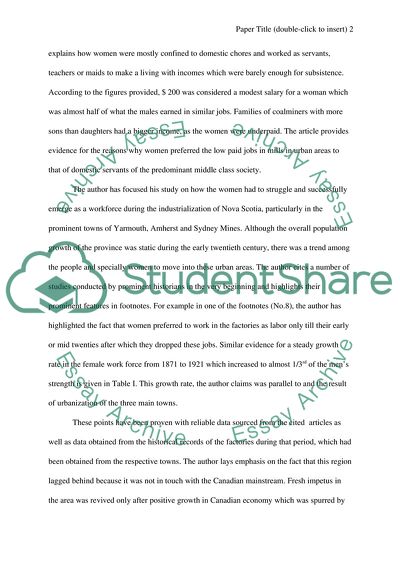Cite this document
(Female Participation in Nova Scotia's Paid Labour Force, 1871-1921 by Article Example | Topics and Well Written Essays - 1500 words, n.d.)
Female Participation in Nova Scotia's Paid Labour Force, 1871-1921 by Article Example | Topics and Well Written Essays - 1500 words. https://studentshare.org/social-science/1715084-the-industrial-context-of-inequality-female-participation-in-nova-scotias-paid-labour-force-1871-1921
Female Participation in Nova Scotia's Paid Labour Force, 1871-1921 by Article Example | Topics and Well Written Essays - 1500 words. https://studentshare.org/social-science/1715084-the-industrial-context-of-inequality-female-participation-in-nova-scotias-paid-labour-force-1871-1921
(Female Participation in Nova Scotia'S Paid Labour Force, 1871-1921 by Article Example | Topics and Well Written Essays - 1500 Words)
Female Participation in Nova Scotia'S Paid Labour Force, 1871-1921 by Article Example | Topics and Well Written Essays - 1500 Words. https://studentshare.org/social-science/1715084-the-industrial-context-of-inequality-female-participation-in-nova-scotias-paid-labour-force-1871-1921.
Female Participation in Nova Scotia'S Paid Labour Force, 1871-1921 by Article Example | Topics and Well Written Essays - 1500 Words. https://studentshare.org/social-science/1715084-the-industrial-context-of-inequality-female-participation-in-nova-scotias-paid-labour-force-1871-1921.
“Female Participation in Nova Scotia'S Paid Labour Force, 1871-1921 by Article Example | Topics and Well Written Essays - 1500 Words”. https://studentshare.org/social-science/1715084-the-industrial-context-of-inequality-female-participation-in-nova-scotias-paid-labour-force-1871-1921.


